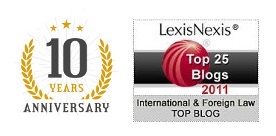Confectionary multinational Nestle has this week failed to persuade European courts that it should grant the UK trademark request on the shape of its well-known chocolate bar, the Kit Kat. In a long-running case Nestle attempted to prove that the shape of the four-finger bar was what consumers used to identify it as a Kit Kat. Having failed to do so, the shape will not be trademarked, and chocolate bars of a similar shape are free to be sold by competitors.
Cadbury – Nestle’s main rival in the British chocolate market – were pleased with the decision. While Cadbury do not have any products that are similar in shape to the Kit Kat, they may be concerned about the precedent that could be set by such a ruling. After all, if Kit Kat were to trademark one shape, that could leave the door open to trademarking more, which could encroach on the ability of Cadburys’ to manufacture some of their products.
But the fact remains that no significantly similar chocolate bar produced by a serious rival exists in the UK. The only chocolate bar that would infringe the trademark – had it been granted – is the Kvikk Lunsj bar (Quick Lunch, in English), a four-fingered wafer bar produced by Norwegian confectionary company Freia. While it is a well-known chocolate bar in Norway, Kvikk Lunsj is only available in a few shops in the UK, but many will have never seen – let alone eaten – one.
However, the availability of this Norwegian chocolate bar that bears a striking similarity to the Kit Kat in the UK is poignant. In 2013 Nestle were able to secure an EU-wide patent for the shape of the Kit Kat, before the Intellectual Property Office (IPO) in Britain ruled that it was the colour of the packaging, not the shape of the chocolate, which consumers used to identify the product. This meant that competitors would be allowed to sell similarly shaped snacks in the UK. It’s worth noting also that Norway is not an EU member state, and therefore not subject to Nestle’s EU-wide patent.
However, the most pertinent issue here is revealed when you follow the money. Cadbury’s are owned by Mondelez International – a food and drink multinational that also happens to own Freia, the producers of Kvikk Lunsj. In the event, the fact that most British people have never even seen the words Kvikk Lunsj before was irrelevant. Mondelez were able to successfully argue that the availability of the Norwegian chocolate in British stores meant that Nestle could not prove that British consumers solely identified the four-fingered chocolate bar shape as a Kit Kat. It is in this context that the motivation behind the case begins to make sense; this is not a small Norwegian company taking on the behemoth of Nestle in the legal arena. This is no David vs Goliath. This is a company that owns Cadbury’s – one of the UK’s most beloved food brands – undermining its greatest rival.
It may be a source of annoyance for Nestle that Kvikk Lunsj – created two years later than the Kit Kat – is the more popular option in Norway, and also that it is available in the UK. This may be a factor in their aggressive pursuit of the trademark in the UK. However, the outlook is not positive. Nestle were said to be ‘pleased’ with the ruling. Does that indicate that they’re cutting their losses? Or was it a statement said through gritted teeth as Nestle plots its next plan of attack? Time will tell, but one thing is certain; this is a big setback for Nestle.
Wayne Beynon is an IP lawyer at Cardiff and London based law firm Capital Law: www.capitallaw.co.uk


 12+ years sharing great legal advice
12+ years sharing great legal advice
